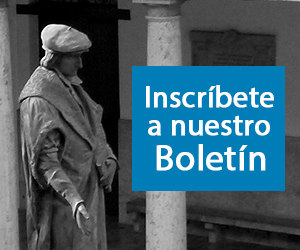Autor: Adrián Arrébola Blanco. Profesor Ayudante Doctor de Derecho Civil, Universidad Complutense de Madrid. Correo electrónico: adrianarrebola@ucm.es
Resumen: El régimen de participación en las ganancias fue introducido hace más de cuarenta años en el ordenamiento jurídico español junto con el de separación de bienes y la sociedad de gananciales con la esperanza de que llegara a convertirse en una alternativa capaz de hacer frente a las desventajas de estos dos regímenes económico-matrimoniales, comúnmente aplicables a los matrimonios. Desde entonces, sin embargo, su falta de tradición en la historia jurídica española se ha venido materializando en un elevado grado de desconfianza hacia su aplicación por parte de los juristas prácticos que lo ha llegado a condenar al más absoluto olvido, incluso en el ámbito de la docencia y de la investigación. Pero esta situación no tiene comparación con la experiencia vivida durante el mismo periodo de tiempo en otros ordenamientos jurídicos europeos a la vista de la evolución que han experimentado sus respectivos regímenes económico-matrimoniales, a partir de la aparición del de participación en las ganancias. En consecuencia, a lo largo del presente trabajo se emprenderá un recorrido a través de su historia en la tradición jurídica europea con el objetivo de poner de manifiesto su interés tanto para el ordenamiento jurídico español como para una futura unificación de los regímenes económico-matrimoniales en el seno de la Unión Europea.
Palabras clave: régimen económico-matrimonial; régimen de participación en las ganancias; régimen de comunidad de bienes; régimen de separación de bienes; Derecho comparado.
Abstract: The community of accrued gains system was introduced more than forty years ago in the Spanish legal system together with the separate and community property systems, commonly applicable to marriages. Its introduction embodied the prospect for it to become a valid alternative, capable of dealing with the disadvantages of the other two matrimonial property systems. Since then, however, its lack of tradition in Spanish legal history has been materialized in a high degree of suspicion towards its application by legal practitioners, which has eventually condemned it to an absolute oblivion, even in the field of teaching and research. In contrast, this situation has no comparison with the experience lived during the same period of time in other European legal systems, in view of the evolution that their matrimonial property systems have experimented since the appearance of the community of accrued gains system. Consequently, this work will undertake a journey through its history in the European legal tradition with the aim of highlighting its interest both for the Spanish legal system and for a future unification of matrimonial property systems within the European Union.
Key words: matrimonial property system; community of accrued gains system; community property system; separate property system; comparative law.
Sumario:
I. INTRODUCCIÓN.
II. PUNTO DE PARTIDA: LA COOPERACIÓN ESCANDINAVA EN TORNO A LA COMUNIDAD DIFERIDA DE BIENES.
III. PRIMERA FASE: LA CREACIÓN FRANCO-ALEMANA DEL RÉGIMEN DE PARTICIPACIÓN EN LAS GANANCIAS.
IV. SEGUNDA FASE: LA REFORMA DEL RÉGIMEN ECONÓMICO DEL MATRIMONIO EN EL DERECHO CONTINENTAL.
V. TERCERA FASE: LA RECEPCIÓN DE LA EQUITABLE DISTRIBUTION EN EL DERECHO ANGLOSAJÓN.
VI. ÚLTIMA FASE: EL IMPULSO UNIFICADOR DEL TRATADO FRANCO-ALEMÁN DE 4 DE FEBRERO DE 2010.
VI. CONCLUSIONES.
Revista indexada en SCOPUS (Q3), REDIB, ANVUR (Clase “A”), LATINDEX, CIRC (B), MIAR.
Referencia: Actualidad Jurídica Iberoamericana Nº 17, agosto 2022, ISSN: 2386-4567, pp. 690-767






